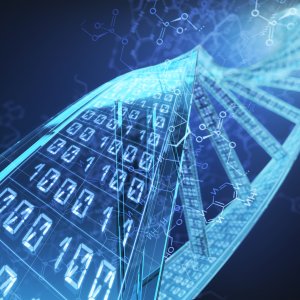In the digital work “RenaissanceDreams” (created for the Meet in Milan), the Turkish artist Refik Anadol fed thousands of open-source images of works of art and architecture from the Italian Renaissance, and literature texts from 1300 to an artificial intelligence and the 1600s: an immense dataset processed and revisited in real time by algorithms that create, in a fluid and continuous way, new figures, colors and original sounds. “When you immerse yourself in this dynamic work, you ‘see’ the algorithm painting with brushstrokes of pixels: at first everything appears very confusing, but in the end it gives you a shape that you can recognise. In my work something very similar happens: we start from a mass of incomprehensible information to arrive, little by little, at clear answers.” Talking is Francesca Buffa, theoretical physicist expert in Artificial Intelligence (AI) and with a full career at the University of Oxford behind her. Thanks to a European ERC grant, in 2018 she returned to Italy to accept an offer from Bocconi University, where she and other colleagues started a new department specialized in AI. Now her research continues (also) at the Ifom-Institute Foundation of Molecular Oncology, in her home Experimental laboratory of Artificial Intelligence and Systems Biology. To put it simply, Buffa is concerned with using AI to better understand the behavior of tumors. We interviewed her on the occasion of International Day of Girls and Women in Sciencewhich is celebrated on February 11th.
Targeted screening and early diagnosis: this is how AI is changing medicine
by Sandro Iannaccone

Professor Buffa, how did you get from theoretical physics to biology?
“In the 2000s, while I was doing my doctorate, the first sequencing of the human genome was published. To process the data, both technological resources and people who knew how to use them were needed. I was already very interested in biology and I said to myself: ‘this is my moment’. I threw myself into this new field to understand how technologies could give us information, and which ones. With the prospect that in the future they could make a difference for some diseases.”
One of your first searches?
“We began to study what happens to tumor cells when there is little oxygen, a condition that can occur frequently because tumors grow very quickly, exceeding the capacity of the blood vessels of the surrounding tissue, and form their own blood vessels that are often abnormal with impaired flow, but also for example when administering anti-angiogenic drugs, which reduce the formation of new blood vessels to feed the cancer. In fact, there are cases in which tumors, in the absence of oxygen, respond by activating survival mechanisms that make them more aggressive and also resistant to treatments. Through machine learning algorithms we have analyzed a lot of laboratory data to arrive at what we call a ‘signature’: a signal that tells us which tumors are activating a response to hypoxia. Today this signature that we have identified is widely used in clinical research.”
Research: what is synthetic data. And why they are replacing the real ones
by Tiziana Moriconi


What are the possible implications of this type of research in clinical practice?
“There are essentially two: one is to stratify patient populations, for example to establish who should or should not administer a certain treatment: in a word, personalize treatments. But this requires very large clinical studies on thousands of patients and, in general, the interest and financing of the industry is needed. The second outcome is the development of new drugs based on the discovery of new weak points of cancer.”
In short, AI is essential for oncology research…
“Today the omics sciences (genomics, metabolomics, proteomics, etc., ed.) and imaging produce an abnormal amount of data and if we want to use them to extricate ourselves from the complexity we need these tools. Which in some cases are still not even enough. We have a double tension: the one that comes from data and the one that comes from technological development. The near future will see the emergence of integromics.”
PatientGpt, AI accelerates biomedical research
by Dario Rubino


Things?
“Omic sciences and imaging give us different types of information about the same biological process. We want to put them together in the same models: instead of having many classifiers, we are looking for a ‘holistic classifier’ that takes into account all facets of biology. We are therefore trying to develop tools that can absorb this gigantic complexity to produce a simple answer. Which is what we want in medicine.”
Artificial intelligence without prejudice? It can be done
by Elisa Manacorda


February 11th is the day of women and girls in science, how do you assess the current situation in your field?
“Perhaps we have overcome the prejudice according to which women are not suited to the sciences, even the hard ones. I see many more women in my industry today than when I started. Among junior researchers I would say that we are reaching parity, and in the future I believe that we will also reach it among seniors. And it’s also important for scientific advancement, because different genders have a slightly different way of thinking. Today girls are much more incentivized and stimulated to make this choice. And there are centers that have adapted to support them. At Ifom, for example, since 2007 there has been a laboratory, Lab G, where pregnant or breastfeeding women can continue to carry out biomedical research in maximum safety. Normally, in fact, this type of activity is precluded due to the potential risk of exposure to chemical, physical and biological agents that could be dangerous for the child. This is a very practical way of concretely helping women in their scientific careers.”

